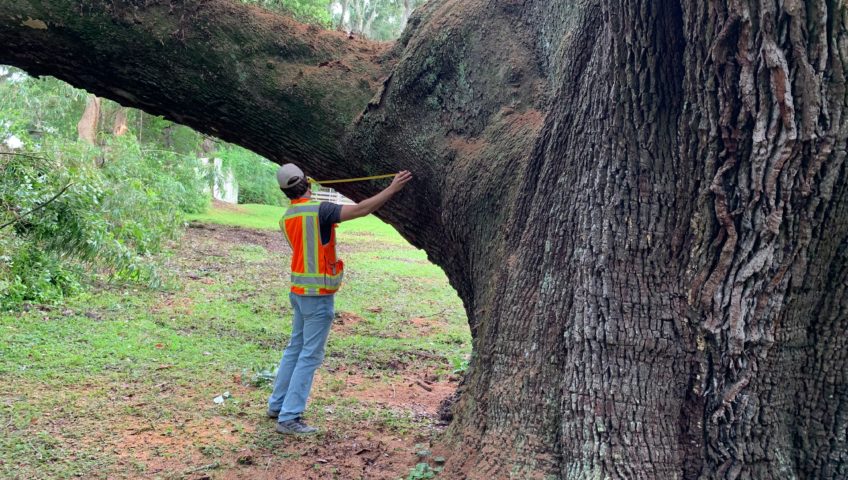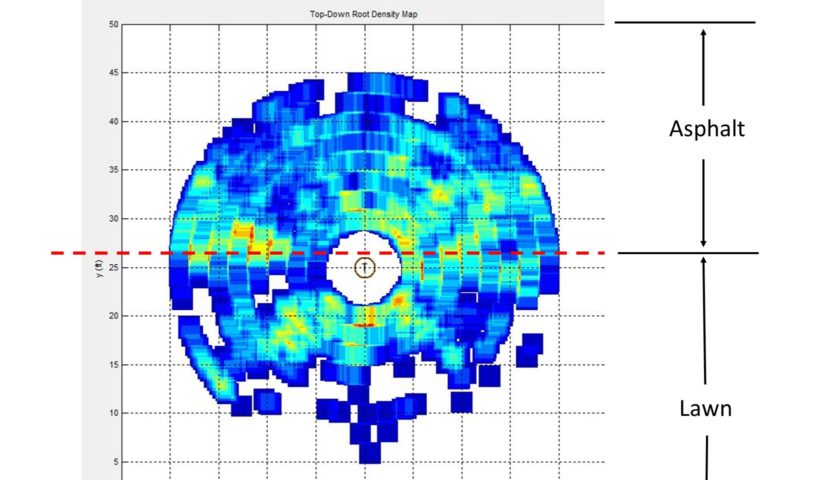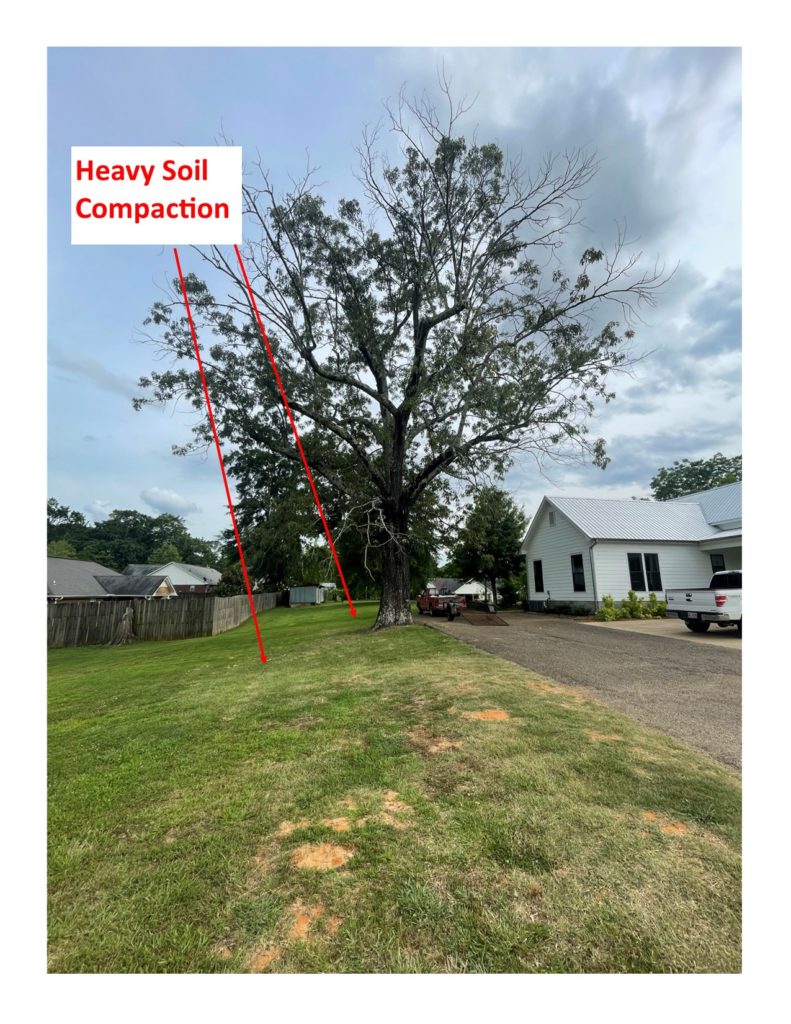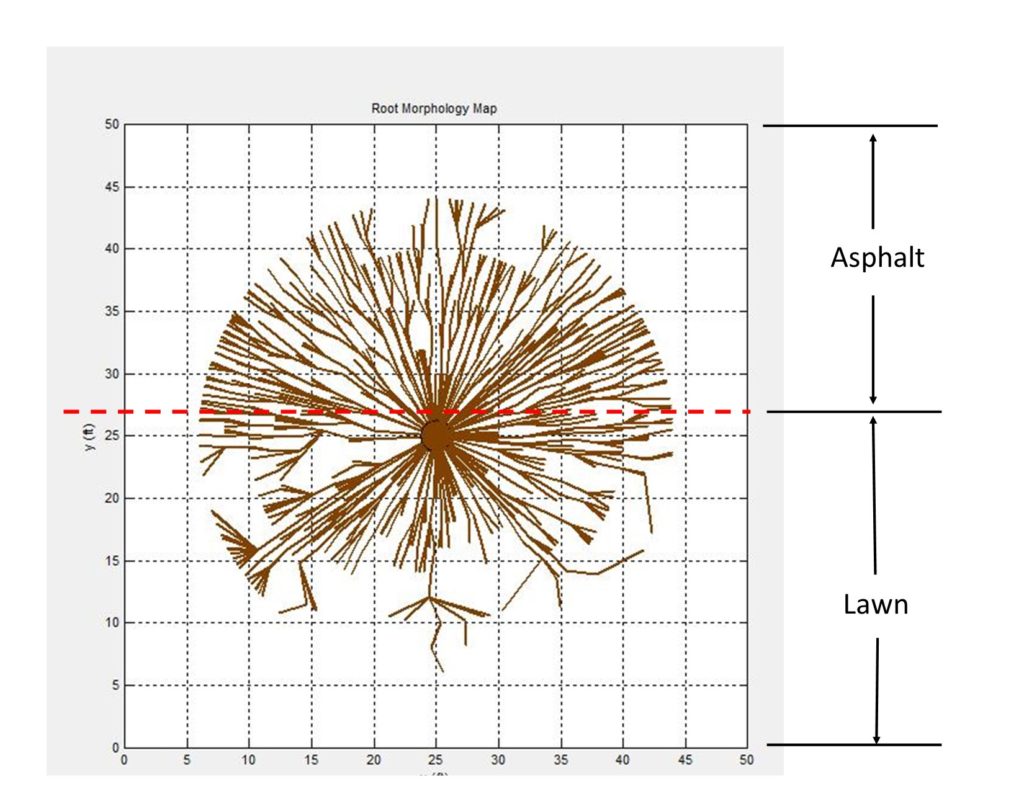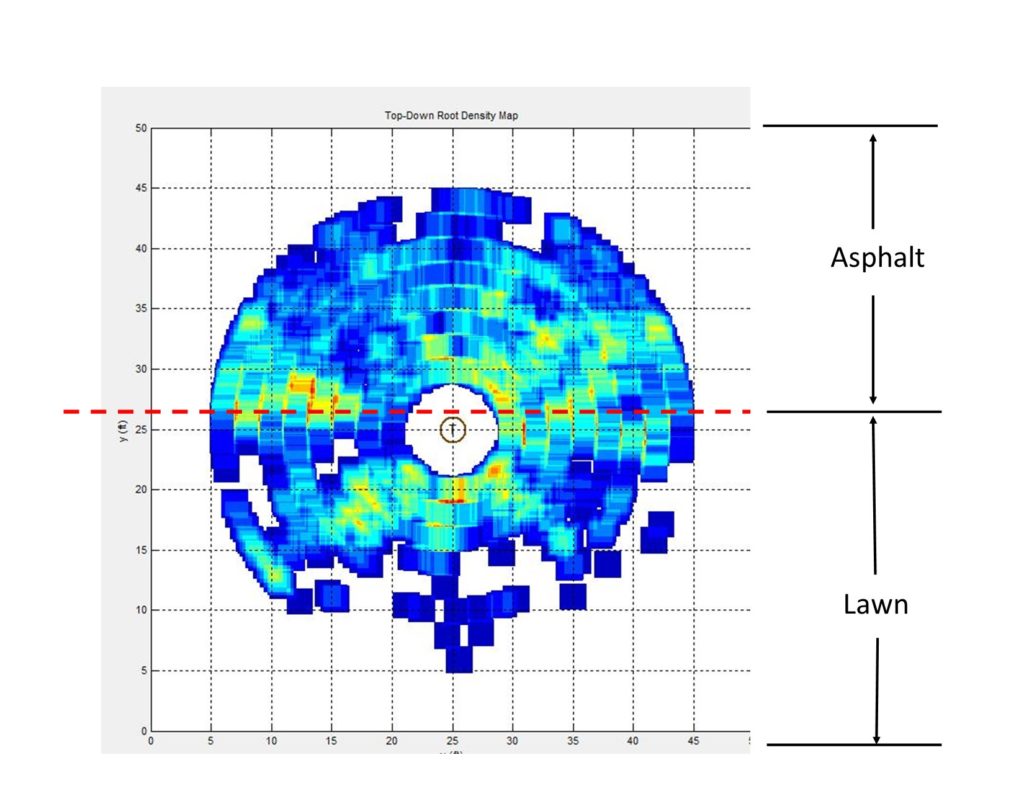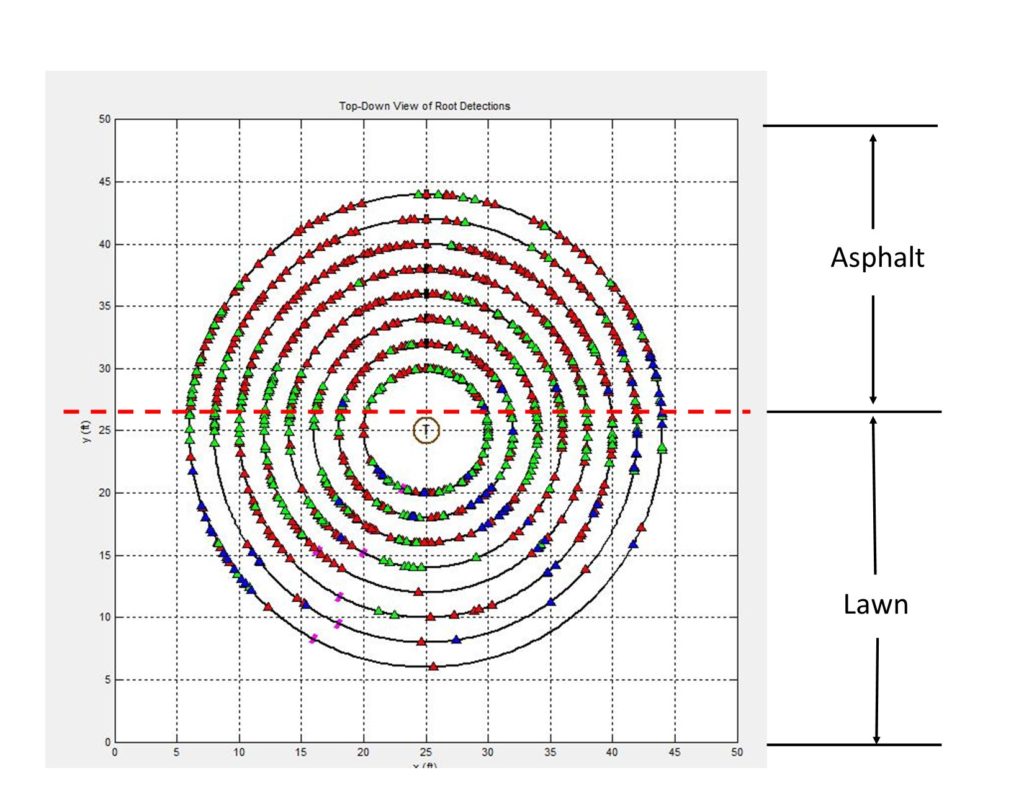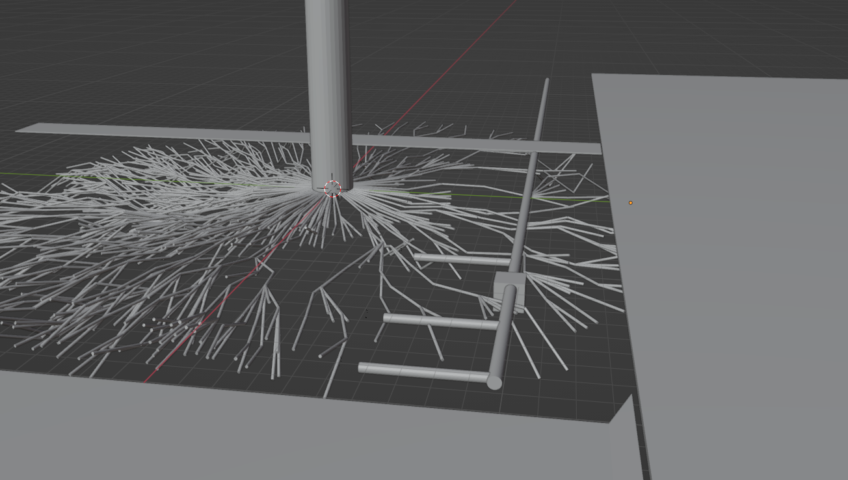
One of the biggest factors that can cause stress in trees is water. Along the soil moisture spectrum,
flooding and drought are some major factors that will stress trees. Due to this, drainage and irrigation
can play a
large role in tree health. In this case, routine irrigation, and an ineffective drain most likely
was a contributing factor that lead to root loss on this Water Oak. After observing differences in soil
moisture content around the tree, we mapped the root
s with the ground penetrating radar. The results
showed fewer detections in the area with a higher moisture content.
In the area of low root density,
most root detections were made in the top 8 inches of the soil. It is assumed that
oxygen levels
decrea
se in Zones 2 & 3 to a concentration that would not support root respiration. Installation of
French drains have been recommended to address the water issue. Trenching is being done with an air
excavation tool to minimize root loss in the area.
